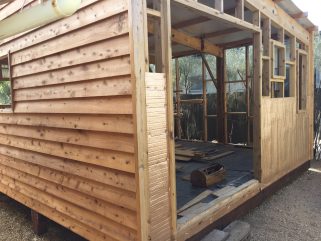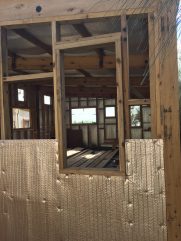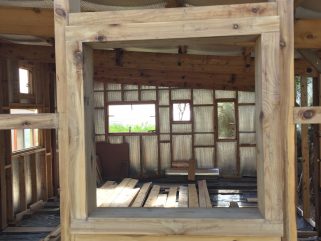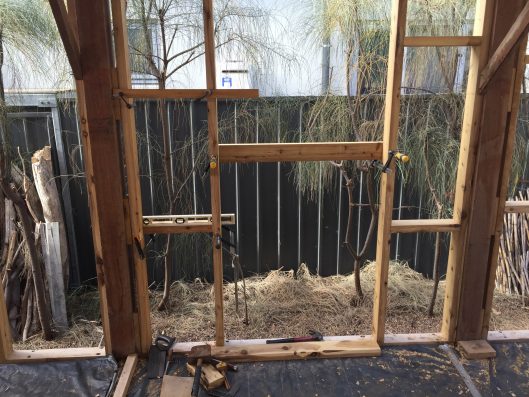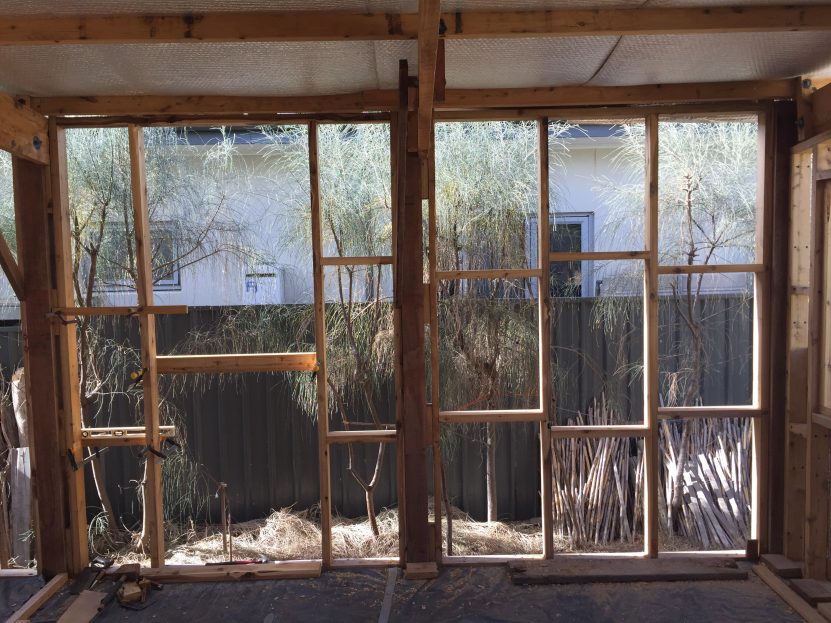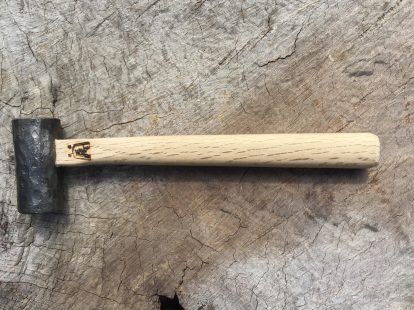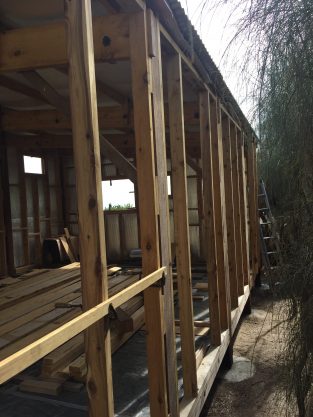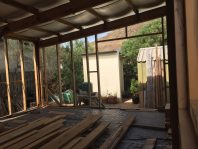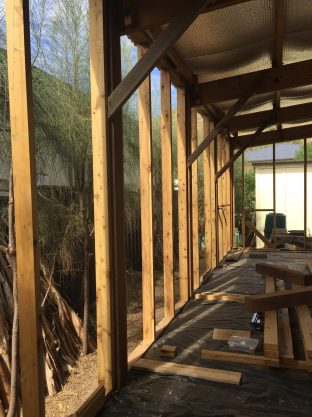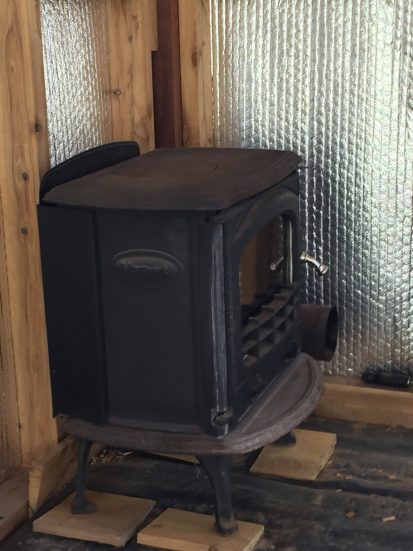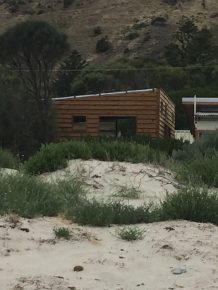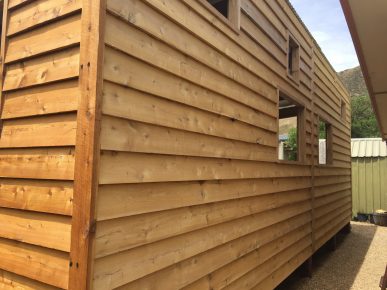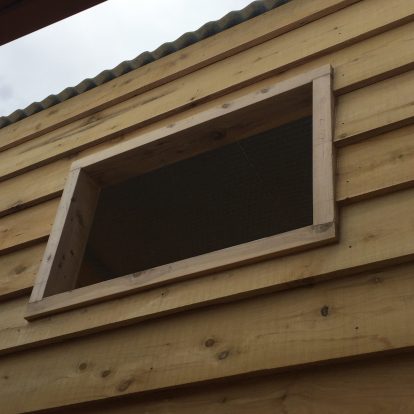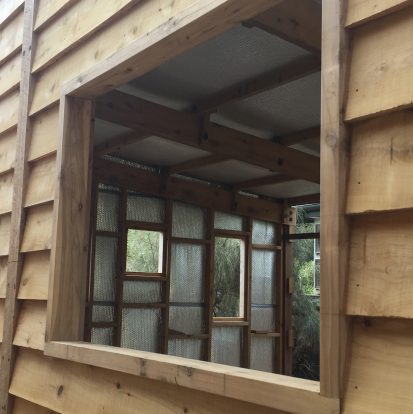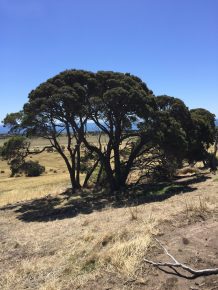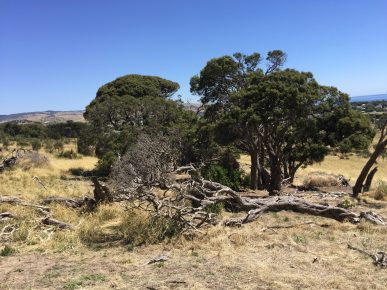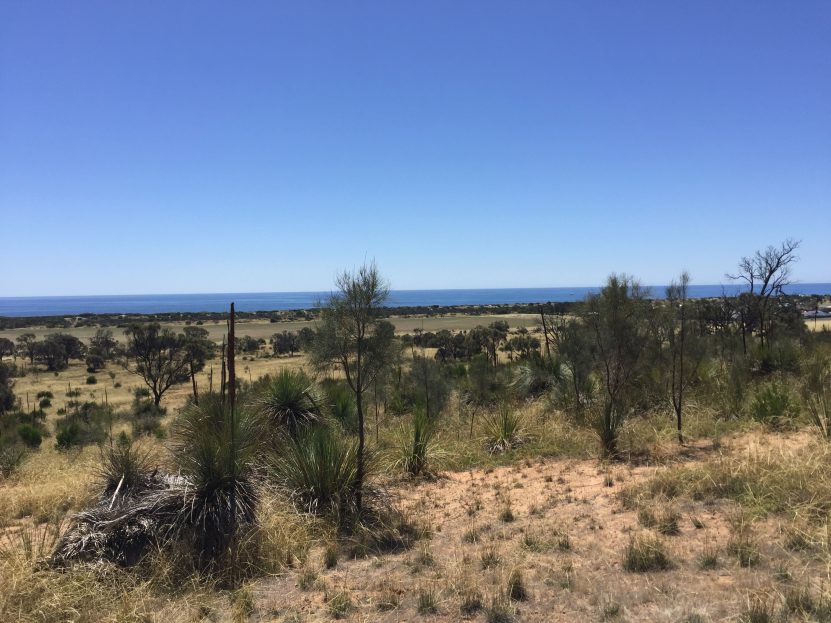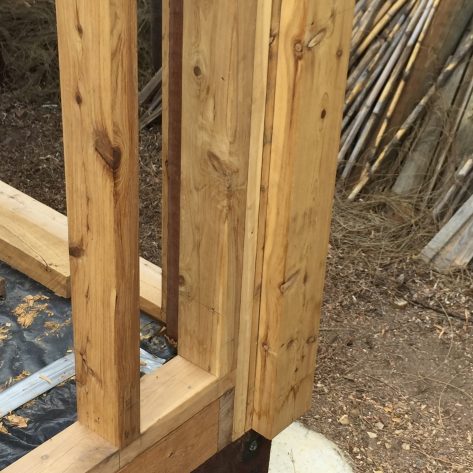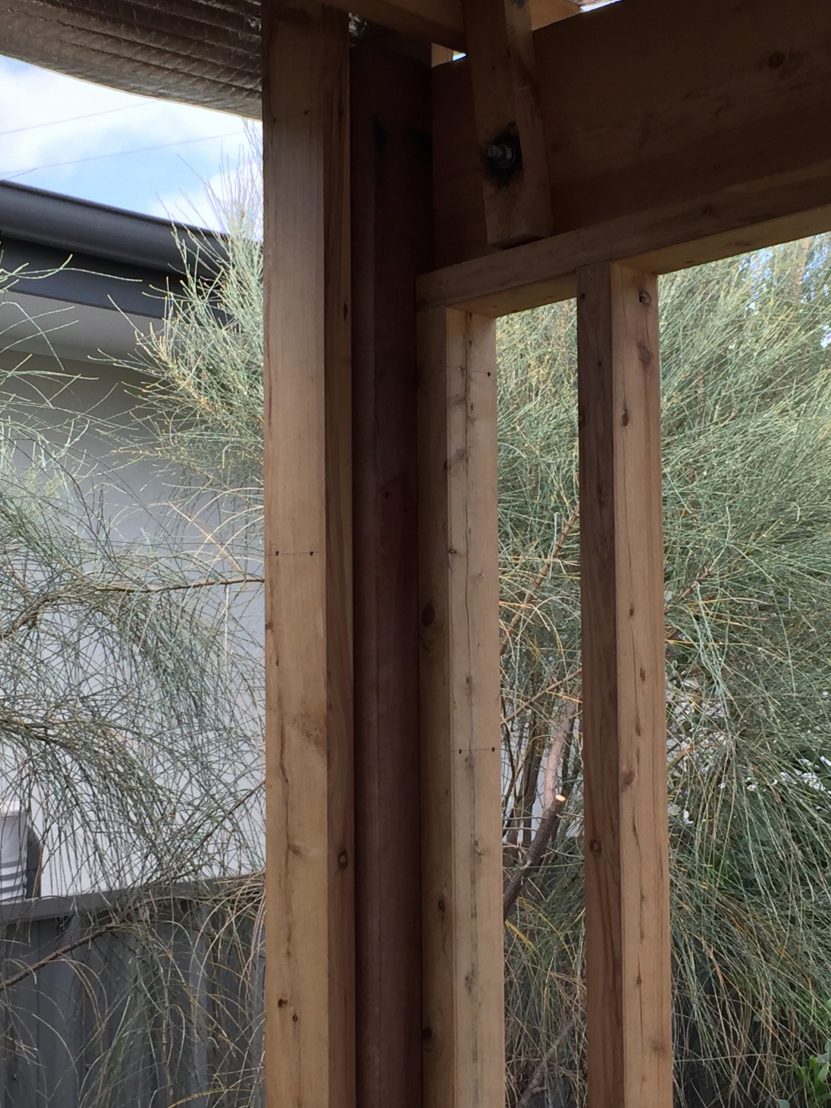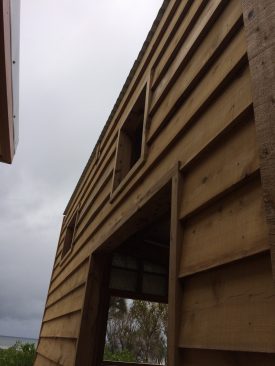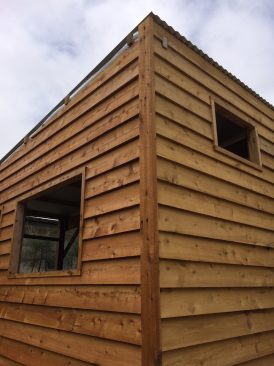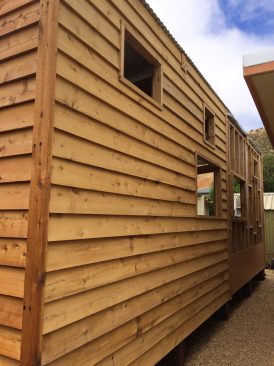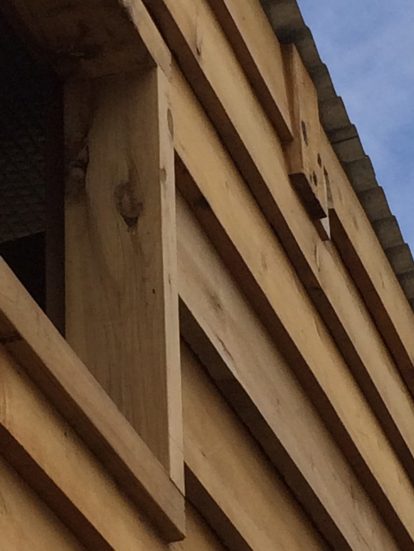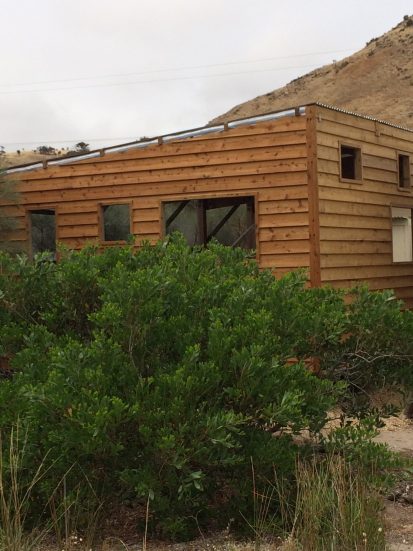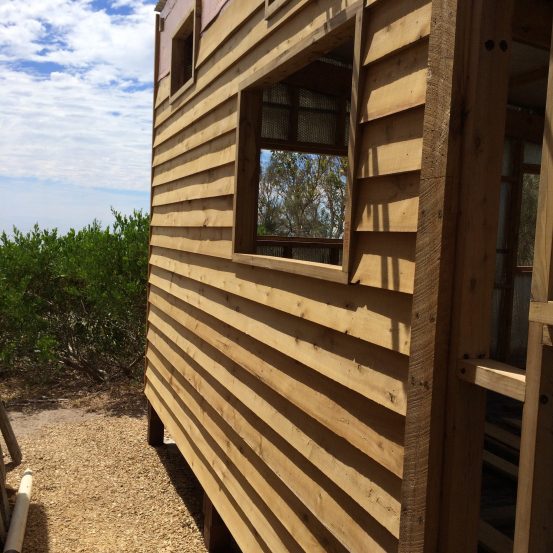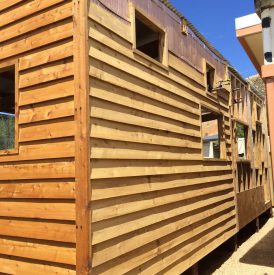I am working on two fronts at present: the eastern and northern walls.
It is perfect weather for building, with the gentle Autumn light, pleasant temperature, and calm seas (for the occasional swim).
I have fastened a sheet of air-cell sisalation along the eastern wall, in readiness for the weatherboards. You can see in the photos that the entrance is solidly defined.
My priority, however, is the northern wall, since the roof slopes from south to north, and I haven’t yet installed fascia and gutter. When it rains, the northern side can get a little uncomfortable – so I am concentrating my efforts on that wall. I need to finish the frames and window as soon as may be.
What a delight it is to work with this cypress. I think I may have mentioned it before, and if so, it is worth repeating. Cuts sweetly, planes sweetly, fastens easily (as long as you pre-drill the holes), has a lovely honey colour and intoxicating smell – what more could you ask from a humble wood? And termites find it distasteful; it is their loss.
I am hoping to get the boatshed water-tight before the late autumn rains sweep in. Of course, I need to put some glass in the windows – that will help.
Ps My thanks again to Sam for his excellent photographic work, which (as far as I know) he is providing free of charge. I particularly like the close-up photo of the northern wall frames and delicate sheoak. It reminds me of a Japanese woodblock print, in vertical format….
